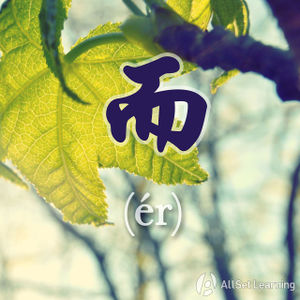Difference between revisions of "Using "er" to explain contrasting ideas"
(→Books) |
|||
| Line 29: | Line 29: | ||
[[Category:B1 grammar points]] | [[Category:B1 grammar points]] | ||
| − | {{Basic Grammar|而|B1|S1,而 S2|我 喜欢 中国 菜,<em>而</em> 他 不 喜欢。|grammar point|}} | + | {{Basic Grammar|而|B1|S1,而 S2|我 喜欢 中国 菜,<em>而</em> 他 不 喜欢。|grammar point|NEEDCODE}} |
{{Similar|Expressing "not only… but also"}} | {{Similar|Expressing "not only… but also"}} | ||
{{Similar|"Not only… but also" with "bujin"}} | {{Similar|"Not only… but also" with "bujin"}} | ||
{{Similar|Many Types of "Not Only… But Also…"}} | {{Similar|Many Types of "Not Only… But Also…"}} | ||
{{POS|Conjunctions}} | {{POS|Conjunctions}} | ||
Revision as of 05:31, 14 June 2013
| This article is a stub. Editors can help the Chinese Grammar Wiki by expanding it. |
-
Level
-
Similar to
-
Used for
-
Keywords
The conjunction 而 (ér) is used to connect two sentences that are related to each other, but talk about contrasting ideas or subjects. In this manner, it can be seen as a word meaning "but" or "rather." 而 is often used in a more formal or literary sense, but it is also common in everyday speech.
Structure
Sentence 1, + 而 + Sentence 2
Examples
Needs Examples
See Also
Expressing "not only… but also" Two words for "but"
Sources and Further Reading
Books
- Integrated Chinese: Level 2, Part 1 (pp. 343-4) →buy



